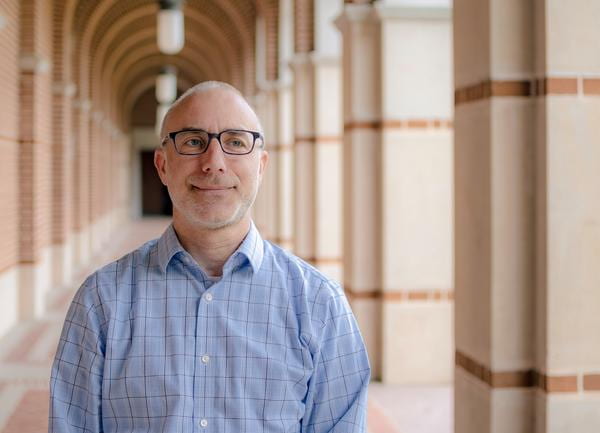Jeffrey Fleisher
Professor of Anthropology
 I am an archaeologist that works in eastern and southern Africa, and my research has focused on questions that concern people often left out of archaeological interpretations: rural communities in urban settlement systems, non-elite people in cities, and communities beyond the frontiers of large-scale societies. This research has explored: the roles that rural and non-elite people play in the composition of urban societies and the way they participate in social, economic, and religious spheres; the transformation of village settlements to ‘rural’ ones as urban centers develop; the use material culture and space in the establishment and maintenance of social inequality and power; and the way people use everyday items such as ceramics, coins, and architecture in public performances and the construction of value.
I am an archaeologist that works in eastern and southern Africa, and my research has focused on questions that concern people often left out of archaeological interpretations: rural communities in urban settlement systems, non-elite people in cities, and communities beyond the frontiers of large-scale societies. This research has explored: the roles that rural and non-elite people play in the composition of urban societies and the way they participate in social, economic, and religious spheres; the transformation of village settlements to ‘rural’ ones as urban centers develop; the use material culture and space in the establishment and maintenance of social inequality and power; and the way people use everyday items such as ceramics, coins, and architecture in public performances and the construction of value.
Methodologically, my research has pioneered new approaches to ephemeral archaeological contexts such as earthen architecture and public and open spaces, integrating archaeological testing/excavation, geophysical surveying, and soil chemistry analysis.
Research projects
I have explored these issues through a number of projects on the eastern African ‘Swahili’ coast, investigating urban polities and rural settlements that date to the 7th- to 16th-centuries AD. The ancient Swahili of the eastern littoral are often cast solely as Islamic merchant entrepreneurs, living in elaborate stone-built towns (stonetowns), and seeking to accumulate prestigious overseas goods. My work has sought to place this powerful minority and their elite spaces in wider context, through investigating the lower ranking, non-elite majority (in both the countryside and town), and by contextualizing elite urban spaces within the larger spatial practices of the town. My work on rural and non-elite parts of the Swahili world focused on Pemba Island, Tanzania, where I conducted survey and excavations from 1999-2006 (partly in collaboration with Adria LaViolette and Bertram Mapunda). This research has sought to show how these people participated in and were important to the multiple scales of the Swahili world: in coastal towns, the regional political economy, and the Indian Ocean world.
A long-term research project (2009-2017) at Songo Mnara, a UNESCO World Heritage Site on the southern Tanzanian coast, focused on the use of material culture and space in Swahili public and private life. Collaborating with Stephanie Wynne-Jones (University of York), this project focused on domestic contexts in and outside houses, as well as the first-ever effort to explore interpret public spaces within a Swahili urban context. This included investigating how open space was created and maintained, the types of productive and practical activities that occurred within central open areas, as well as ritual activities associated with centrally-located tombs, mosques, and cemeteries. Methodologically, this project included scientific analyses new to eastern African archaeology, including geophysical surveys and geoarchaeological research, carried out in collaboration with colleagues in the United Kingdom. This work has contributed to a nascent literature on the way ‘empty’ spaces in urban milieu were locations where social power could be established and maintained, as well as the way that monuments (like Swahili tombs) and the spaces that surround them, may have been active sites of memory-making, a part of the strategic use of the past for the present.
My current research project, funded by the NEH, is a collaboration with Kathryn de Luna (Georgetown) and Matthew Pawlowicz (Virginia Commonwealth Univ.) in the Kafue River floodplain in southwestern Zambia. This project builds on my previous efforts to better integrate archaeological and historical linguistic research and data. The project aims to reconstruct the cultural history of mobility in a region considered beyond the frontiers of surrounding kingdoms and states. The region is punctuated by mounded settlements from the 8th to 15th centuries AD that indicate long-term settlement as well as a subsistence economy that was linked to multiple forms of mobility. Language shift and human migration have long served as explanations for the expansions of language families and populations in sub-Saharan Africa. This project will be the first to study human mobility in such demographic histories as a historical problem in its own right, capturing the motives and contingencies that shaped changing forms of and ideas about mobility and, as a result, actually changed the pace and path of the larger expansion process. Such research on human mobility is only feasible with the creation of an interdisciplinary archive linking archaeological, ecological, ethnohistorical, and historical linguistic data.
photo: Elhadji Diop
Contact
Recent Publications
- No such thing as invisible people: toward an archaeology of slavery at the fifteenth-century Swahili site of Songo Mnara
- Capturing People on the Move: Spatial Analysis and Remote Sensing in the Bantu Mobility Project, Basanga, Zambia
- The Islamic Archaeology of the East African Coast
- Building Medieval Worlds: A Classroom Experience in Digitally Reconstructing Ancient Buildings
- The gathering of Swahili religious practice: Mosques-as-Assemblages at 1000 CE.
- Speaking with Substance: Methods of Language and Materials in African History. New York: Springer